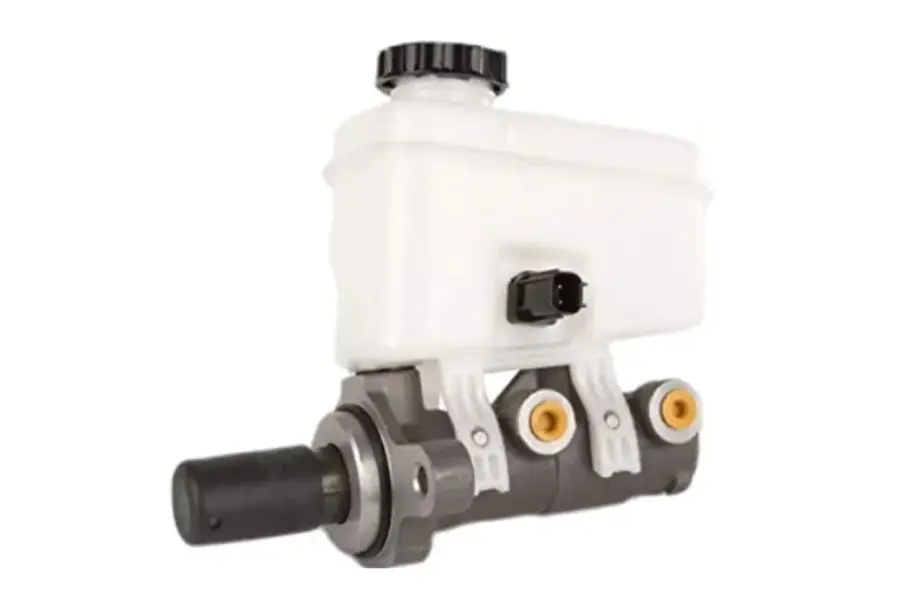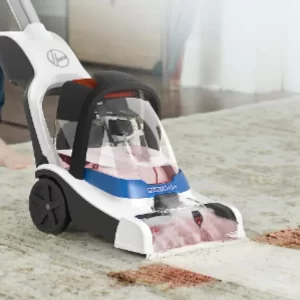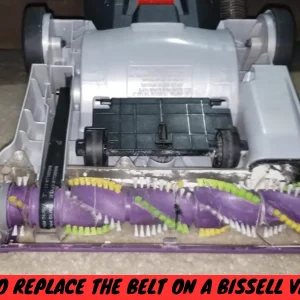Learn how to replace a brake master cylinder with our easy-to-follow guide. Get tips and tricks from the pros and ensure your brakes are working properly.
Table of Contents
- Master Cylinder
- Preparing to Replace the Brake Master Cylinder
- Removing the Old Brake Master Cylinder
- Installing the New Brake Master Cylinder
- Testing the Brake System
- How much to replace master cylinder
- How to install a master cylinder
- Brake master cylinder problems
- Symptoms of a Bad Master Cylinder
- Brake master cylinder repair
- Why repair a master cylinder instead of replacing it completely?
- How to replace brake master cylinder seals
- FAQs
In this article, we’ll provide a step-by-step guide on how to replace a brake master cylinder, along with tips to ensure success. By following our instructions, you can safely and effectively replace a brake master cylinder and restore your vehicle’s braking performance.
The brake master cylinder is an important component of a car’s braking system as it converts pedal pressure into hydraulic pressure required for engaging the brakes. However, over time, wear and tear can occur, leading to reduced braking effectiveness and posing a safety hazard. In such cases, it becomes necessary to replace the brake master cylinder. Nevertheless, replacing the brake master cylinder can be challenging and demands specific skills and equipment.
Master Cylinder
If you have master cylinder then you need to know How to Test a Master Cylinder And you need to know if there is a problem with your master cylinder How to Replace a Brake Master Cylinder. And also you need to know How to bleed a master cylinder with a vacuum pump and if you have dyson cylinder then you need to know How to clean dyson cylinder vacuum also you need to know how to bench bleed a master cylinder
Preparing to Replace the Brake Master Cylinder
Gather Necessary Tools and Supplies
- A new brake master cylinder
- Brake fluid
- A wrench set
- A socket set
- Brake cleaner
- A drain pan
Safety Precautions
How to replace a brake master cylinder requires working with the brake system, which is critical to your vehicle’s safety. Always follow safety precautions when working on your vehicle. Some safety precautions to keep in mind are:
- Wear protective gloves and eyewear
- Ensure the vehicle is on a flat, stable surface
- Use jack stands to support the car
- Do not smoke or use an open flame around the brake fluid
- Do not reuse old brake fluid
Removing the Old Brake Master Cylinder
- Locate the Brake Master Cylinder
- Remove Brake Fluid
- Disconnect Brake Lines
- Remove Mounting Bolts
Installing the New Brake Master Cylinder
- Prepare the New Brake Master Cylinder
- Mount the New Brake Master Cylinder
- Reconnect Brake Lines
Testing the Brake System
- Refill Brake Fluid
- Bleed the Brake System
- Test the Brake System
In this blog post i will show you step by step guide how to Replace a Brake Master Cylinder
How much to replace master cylinder
How much to replace the master cylinder? When considering whether to replace your master cylinder, there are several factors to keep in mind. The age and condition of your car are the most important. If you have an older vehicle and the brakes have been malfunctioning, it may be time to replace the master cylinder. Additionally, if you notice a decrease in the responsiveness of your brakes or if the brake pedal feels spongy, it may be necessary to replace the master cylinder.
When deciding between replacement and repair of the master cylinder, cost is another factor to consider. Repairing the master cylinder may be feasible in some cases, but if the damage is severe or if the device is too old, replacement may be the more cost-effective option. Ultimately, it is advisable to consult a skilled mechanic to assess the condition of your master cylinder and determine the best course of action.
If you have dyson cylinder then you need to know how to clean dyson cylinder vacuum and also you need to know how to Replace a Brake Master Cylinder
How to install a master cylinder
Installing a master cylinder is a difficult and important task that requires expertise in vehicle repairs. However, if you have the necessary skills and confidence, the general steps to follow are:
This article about how to Replace a Brake Master Cylinde
First, gather all the necessary equipment and supplies, including a new master cylinder, brake fluid, a set of wrenches or sockets, and a bleeder kit.
Next, disconnect the brake lines, remove any mounting brackets or nuts, and detach the old master cylinder from the brake booster.
Prepare the new master cylinder by bench bleeding it according to the manufacturer’s instructions. This involves filling and bleeding the cylinder before mounting it on the car.
Once prepared, connect the brake lines, install the new master cylinder onto the brake booster, and securely fasten any brackets or nuts.
Finally, to ensure optimal brake performance and eliminate any air pockets, use a bleeder kit to bleed the brake system.
It is important to remember that installing a master cylinder is a challenging and potentially hazardous task. Therefore, it is recommended to seek the assistance of a skilled technician to ensure that the job is completed safely and correctly.
Brake master cylinder problems
The brake master cylinder problem is an essential component of a car’s braking system that converts the force from the brake pedal into hydraulic pressure. However, over time, the master cylinder may develop several issues that jeopardize the safety and reliability of the braking system. Some of the common problems with the brake master cylinder include brake fluid leakage, internal corrosion, contamination, worn or damaged seals, and a stuck piston. These issues can lead to a spongy brake pedal, reduced stopping power, overheating, and even brake system failure.
To ensure the safety and proper functioning of your vehicle, it is crucial to have any brake master cylinder issues addressed by a qualified mechanic as soon as possible. Regular maintenance and inspection of the brake system can help identify and prevent these issues from worsening.
If you have a brake master cylinder and it has a problem then you need to know how to Replace a Brake Master Cylinder.
Symptoms of a Bad Master Cylinder
If you find that your master cylinder has failed, it can cause a variety of symptoms, which can affect the safety and reliability of your vehicle’s brakes. Here are some common symptoms of a bad master cylinder:
- Spongy brake pedal: If the brake pedal feels soft or spongy and requires more force to stop the vehicle, it could be a sign of a failing master cylinder.
- Low brake fluid level: A low brake fluid level can indicate a leak in the brake system, which can be caused by a failing master cylinder.
- Brakes not responding: If the brakes fail to respond or feel weak when applied, it could be a sign of a failing master cylinder.
- Brake warning light: A malfunctioning master cylinder can trigger the brake warning light on the dashboard.
- Contaminated brake fluid: Dirty or contaminated brake fluid can indicate a problem with the master cylinder, as it can cause damage to the seals and internal components.
If you experience any of these symptoms of a bad master cylinder, it is crucial to have them addressed by a qualified mechanic as soon as possible to ensure the safety and reliability of the braking system.
If you buying a master cylinder in your car then you need to know how to bench bleed a master cylinder and also you need to know how to Replace a Brake Master Cylinder
Brake master cylinder repair
How to Replace a Brake Master Cylinder? It is important to hire a qualified mechanic to handle the complex and potentially hazardous task of repairing a brake master cylinder. The master cylinder is a critical component of a car’s braking system that converts the force of the brake pedal into hydraulic pressure. Any issues with the master cylinder’s performance or signs of deterioration can impact the reliability and safety of the brakes.
A qualified mechanic can diagnose the issue, assess the extent of the damage, and carry out any required repairs or replacements to the brake master cylinder. Typical repairs to a master cylinder include fixing leaks, replacing worn-out seals, and performing a complete rebuild. Regular maintenance and inspections of the braking system can help ensure the safety and reliability of the brakes. It is crucial to have any signs of a faulty master cylinder addressed by a qualified mechanic as soon as possible to maintain the safety and functionality of your vehicle.
If you want your master cylinder repaired then you must know how to Replace a Brake Master Cylinder.
Why repair a master cylinder instead of replacing it completely?
In some cases, it may be more cost-effective to repair a master cylinder rather than replace it entirely. The extent of the damage and the cost of replacement parts will determine whether a master cylinder should be repaired or replaced. If the damage is minor and limited to specific components like the seals, then a repair may be sufficient. However, if the damage is severe, such as corrosion or damage to the piston, a complete replacement may be necessary.
How to Replace a Brake Master Cylinder? Repairing the master cylinder is often a more cost-effective option than replacing it entirely. The extent of the damage and the cost of replacement parts will determine whether it is more practical to repair or replace the master cylinder. If the damage is minor and confined to specific parts like seals, then repairs may be sufficient. However, if the damage is extensive, such as a corroded or damaged piston, a complete replacement may be necessary.
A skilled mechanic can assess the extent of the damage and recommend whether to repair or replace the master cylinder. Ultimately, the decision depends on the cost of replacement parts and the overall cost of repairs versus replacement.
How to bleed a master cylinder with a vacuum pump if you want to know then you can read this and also if you want then you can read about how to Replace a Brake Master Cylinder
How to replace brake master cylinder seals
How to Replace a Brake Master Cylinder? Replacing the brake master cylinder seals is a complex task that requires technical knowledge and experience. Here are some general steps for replacing brake master cylinder seals:
- Gather the necessary tools and parts. You will need a replacement seal kit, brake fluid, a wrench or socket set, a bleeder kit, and safety equipment.
- Drain the brake fluid from the master cylinder and remove it from the vehicle.
- Remove the reservoir and the old seals from the master cylinder.
- Clean the master cylinder thoroughly, removing any debris or contaminants.
- Install the new seals, following the instructions provided in the seal kit.
- Reattach the reservoir to the master cylinder and reassemble the brake system.
- Refill the master cylinder with brake fluid and bleed the brake system to remove any air.
- Test the brakes to ensure they are working correctly.
It is important to note that replacing brake master cylinder seals is a difficult and potentially hazardous task that should only be performed by a skilled mechanic with the necessary training and experience. Improper installation of seals can lead to brake system failure, resulting in significant accidents and injuries. Master cylinder seal issues can be detected early on by conducting regular maintenance and inspections on the braking system.
If you want to replace your master cylinder then you need to know how to replace a brake master cylinder









